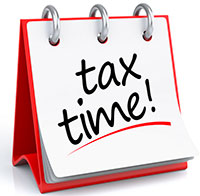
Get free help filing your taxes: Workshops for employees available
 It’s tax time again, and business students at Miami University are once again offering the Volunteer Income Tax Assistance (VITA) program.
It’s tax time again, and business students at Miami University are once again offering the Volunteer Income Tax Assistance (VITA) program.
Miami employees and members of the Oxford community are eligible to take advantage of this free service as an individual or family with a combined income that did not exceed $60,000 in 2014.
No appointments are necessary. Student volunteers are certified by the IRS.
Participants can file their federal and state taxes in person at the following location and times:
3–6 p.m. Tuesdays, Feb. 24; March 3, 10, 17, 31; April 7, 14 in 10 Benton Hall
9 a.m.–noon Saturdays, Feb. 21, 28; March 7, 14; April 4, 11 in 10 Benton Hall
These workshops are sponsored by the department of accountancy, Walmart, the National Disability Institute, Goodwill and United Way.
For further questions contact the department of accountancy at 529-6200.
Online filing available
Employees can also file state and federal taxes online at myfreetaxes.com if individual or combined incomes did not exceed $60,000 in 2014.
Get organized for tax filing
Getting organized is the first step to a less stressful tax filing experience. Below is some helpful information from myfreetaxes.com to use when filing your taxes in person or online.
Step 1: Gather your documents
- W-2s for each job held in 2014 for each person in the household. This form reports your name, wages and other tax information to the IRS.
- 1099s showing other income (unemployment, social security, school loans, health care reimbursement, state tax refund, gambling winnings, contract work) that is reported to the IRS.
- 1098s showing payments you’ve made (school loans, property tax).
- 1095-A if you received credit from the healthcare.gov marketplace.
- Income/interest statements received for any savings account/investments.
- Bank account numbers: a voided check or your bank or credit union’s routing number and savings or checking account number for your refund to be deposited automatically into your account through direct deposit.
- Last year’s tax return (if you have it).
Step 2: Collect information for everyone in your household
- Name and taxpayer number as they appear on the Social Security Card (SSN) or Individual Taxpayer Identification Number letter (ITIN) for you and all dependents (including children and elderly relatives for whom you provide care).
- Date of birth and relationship (son, daughter, mother, etc.).
- Current address (it may be different from the address on your employment records).
Step 3: Gather additional items to get a larger refund
- Childcare expenses: name, address, Tax ID or social security number of the childcare provider.
- Business expenses and assets: if you’re self-employed or have a small business.
- College: loans and/or scholarships received and bills for technical/community college or university (Forms 1098-T/1098-E).
- Educator expenses for teaching grades K-12 (school supplies and materials used in the classroom).
- Charitable donations: list of contributions and amounts, receipts for contributions over $250.
- Vehicles: vehicle sales tax, personal property tax statement for each car you own, total miles driven for the year and/or total miles driven for business.
- Renters: amount of rent paid (in some states).
- Homeowners: mortgage interest statement (Form 1098), real estate taxes paid, Statement of Property Tax Payable in 2014.
- Retirement/IRA: amount contributed to an IRA and total value as of December 2014.
Step 4: Keep copies of your forms and tax statements.
For your protection, keep any forms used to prepare your taxes and a copy of your return for seven years. This information will make it easier to file your taxes next year.
